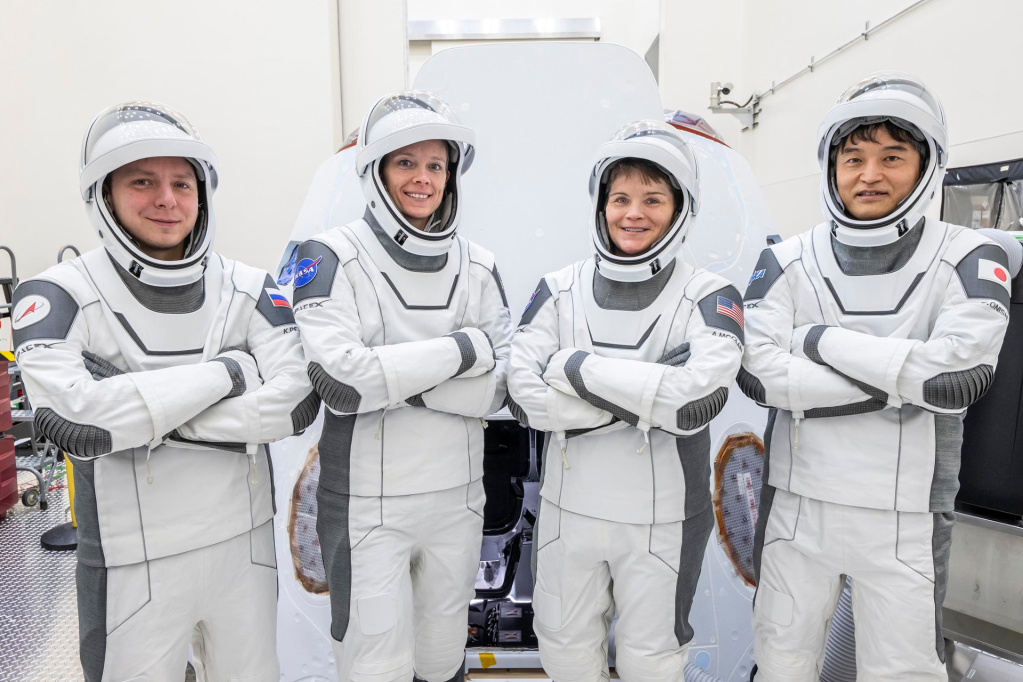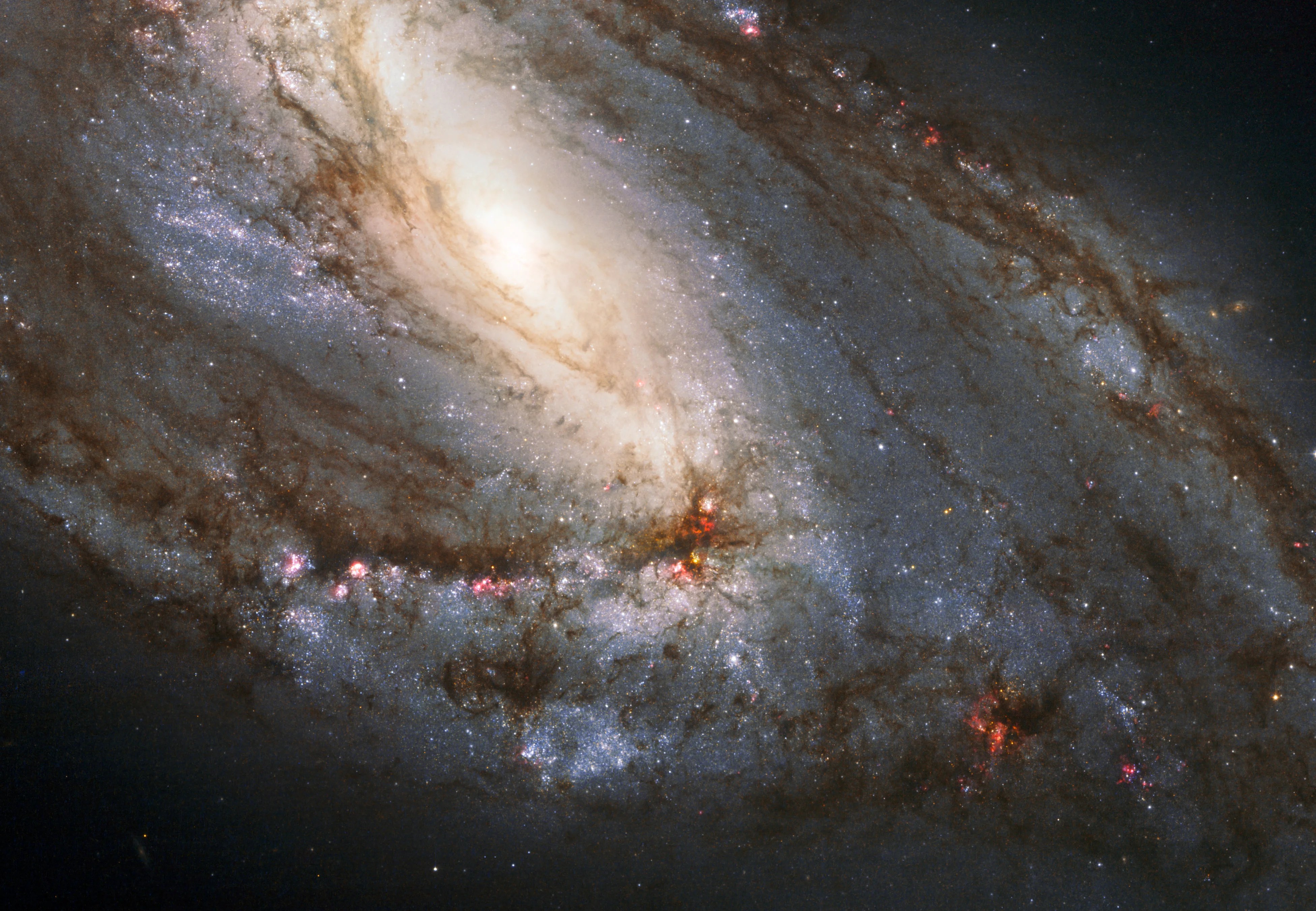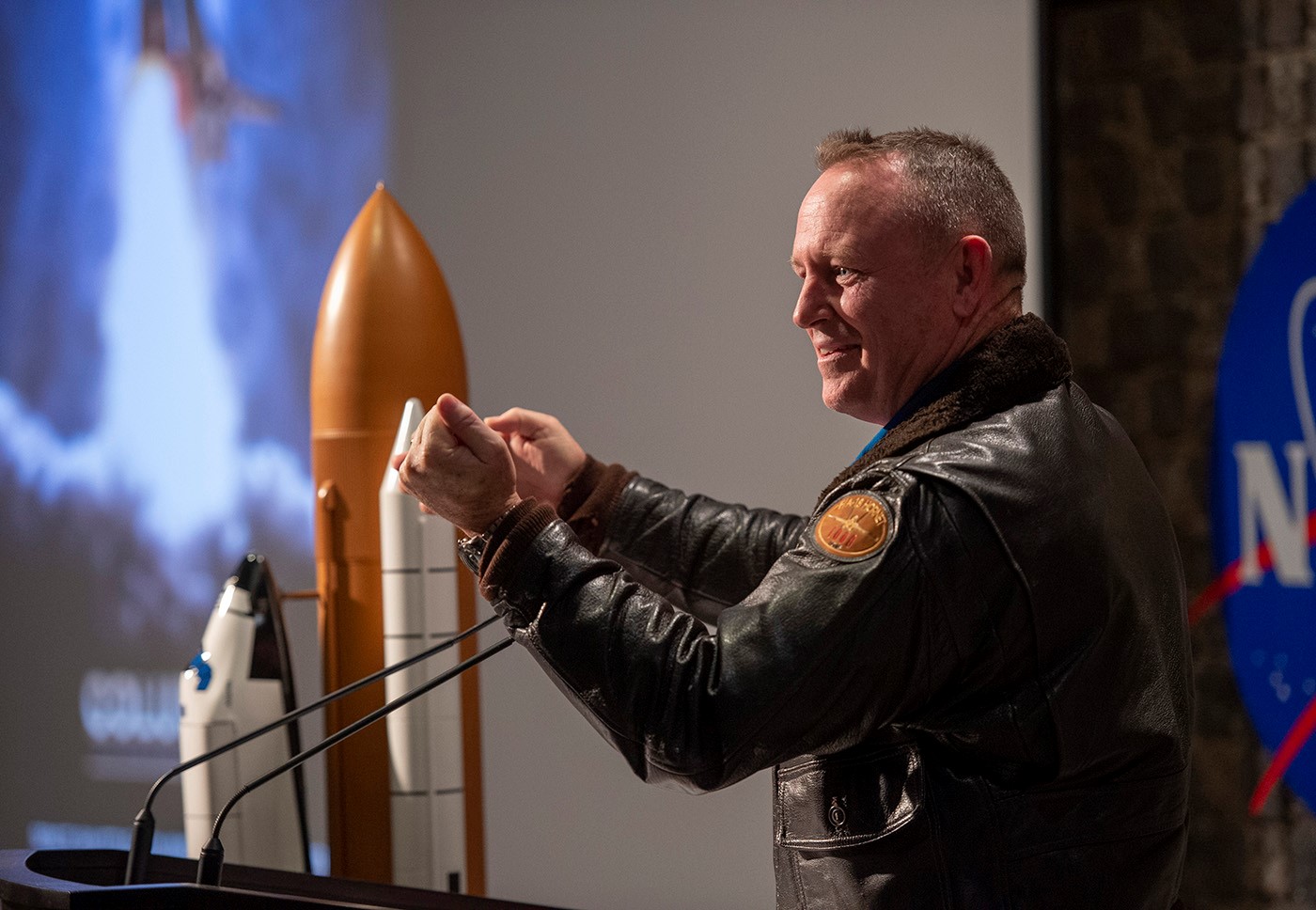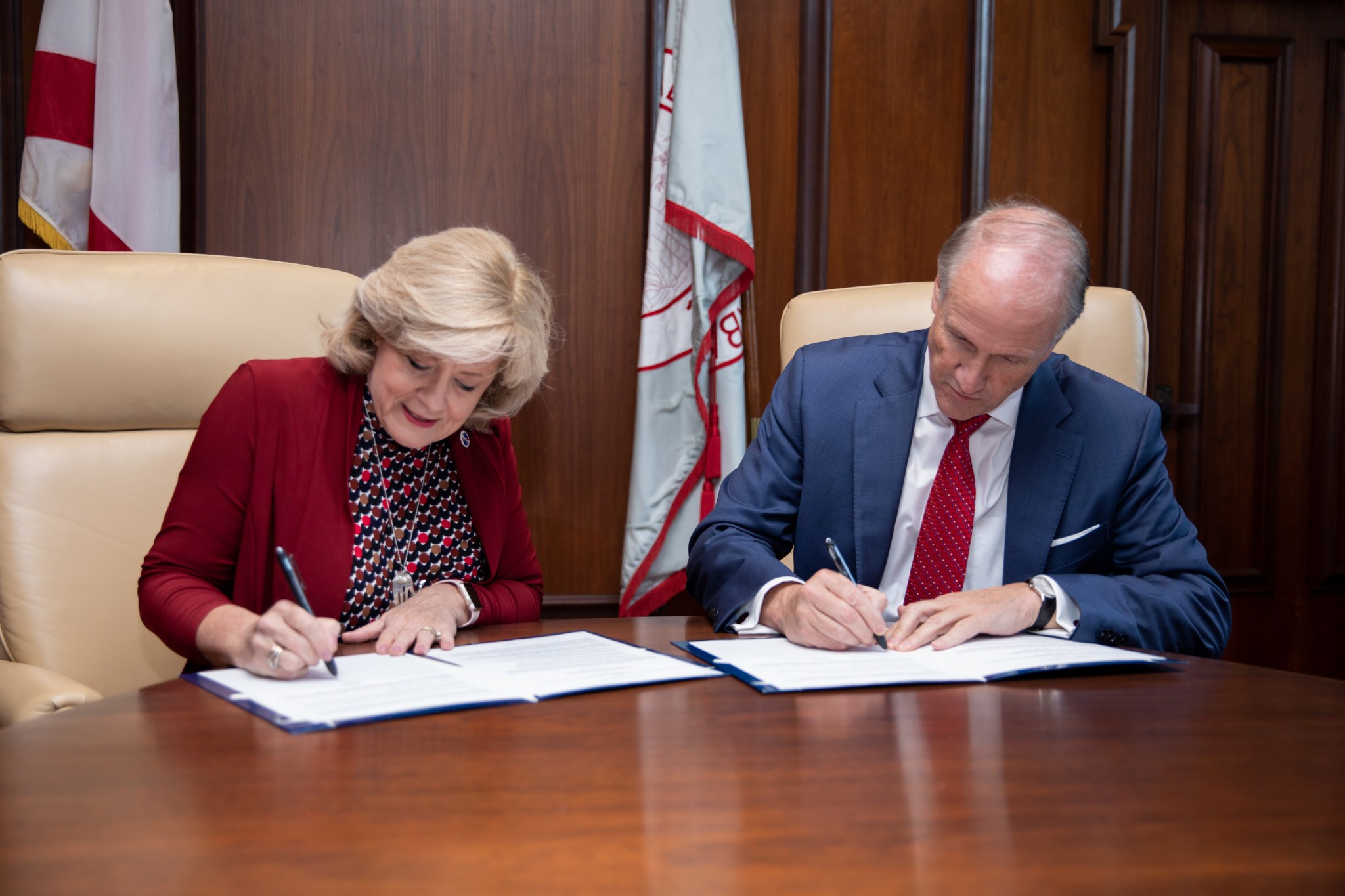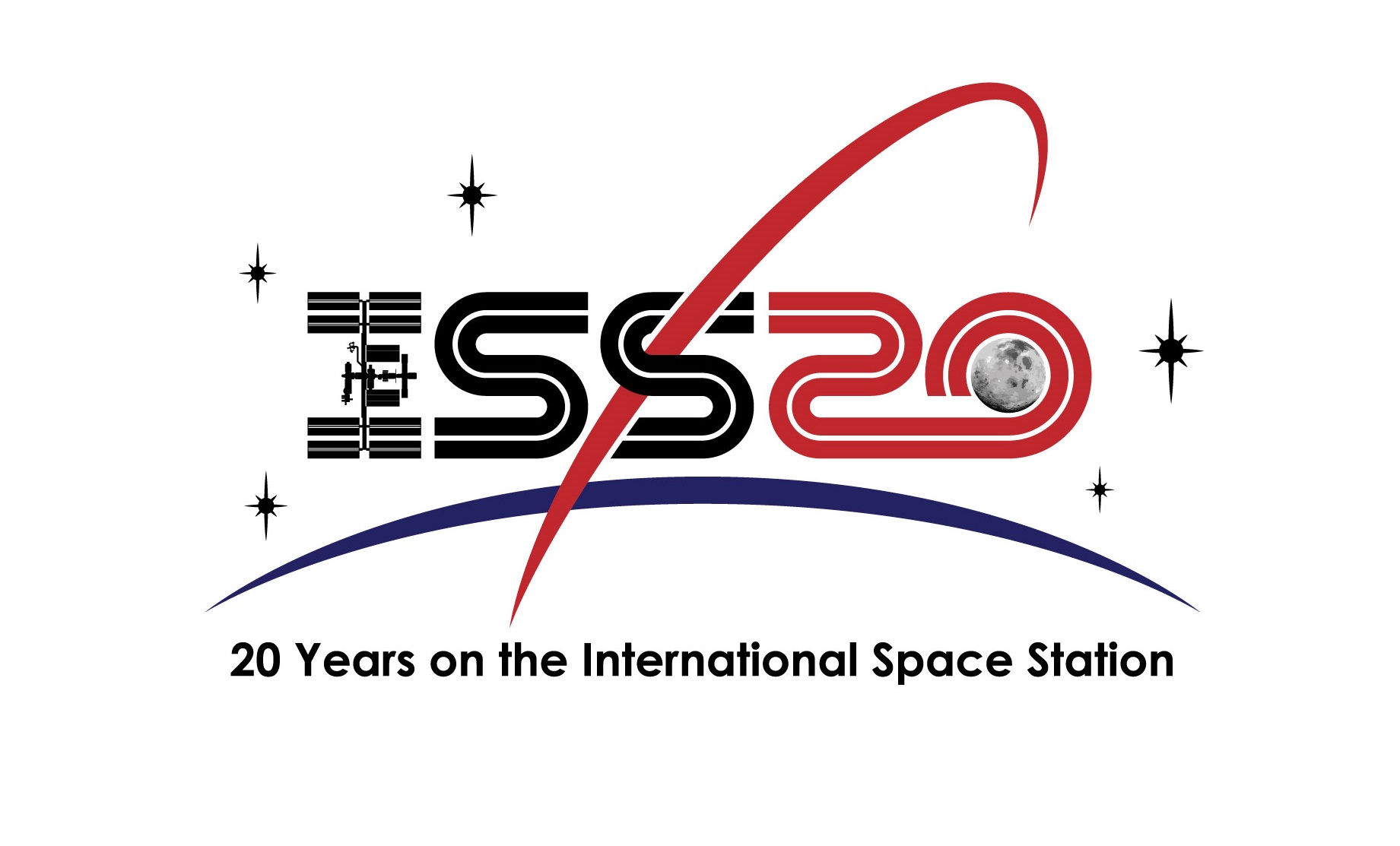In This Week’s Star
- The Mission Continues: The Space Shuttle Columbia National Tour Visits Marshall
- All Engines Attached to SLS Core Stage for Artemis I
- NASA, University of Alabama to Collaborate on Advanced, In-space Manufacturing
- Rocket Science in 60 Seconds: What Is the NASA SLS Rocket’s Exploration Upper Stage?
- Astronaut Anne McClain Shares ISS Stories at Marshall, Honors Service Veterans
- NASA Unveils Logo Celebrating 20 Years of Space Station Crewed Research
- Marshall Team, Buckhorn Middle Students Honor Native American Heritage Month
- This Week in NASA History: Apollo 12 Launches – Nov. 14, 1969
The Mission Continues: The Space Shuttle Columbia National Tour Visits Marshall
By Will Bryan
“Mankind is led into the darkness beyond our world by the inspiration of discovery and the longing to understand. Our journey into space will go on.” – President George W. Bush, Feb. 1, 2003
On Feb. 1, 2003, space shuttle Columbia was returning from Earth orbit following a successful 16-day mission. Columbia and the seven-person crew of STS-107 never made it home. But a new traveling exhibit and tour helps ensure that the legacies and lessons of the crew and space shuttle live on.
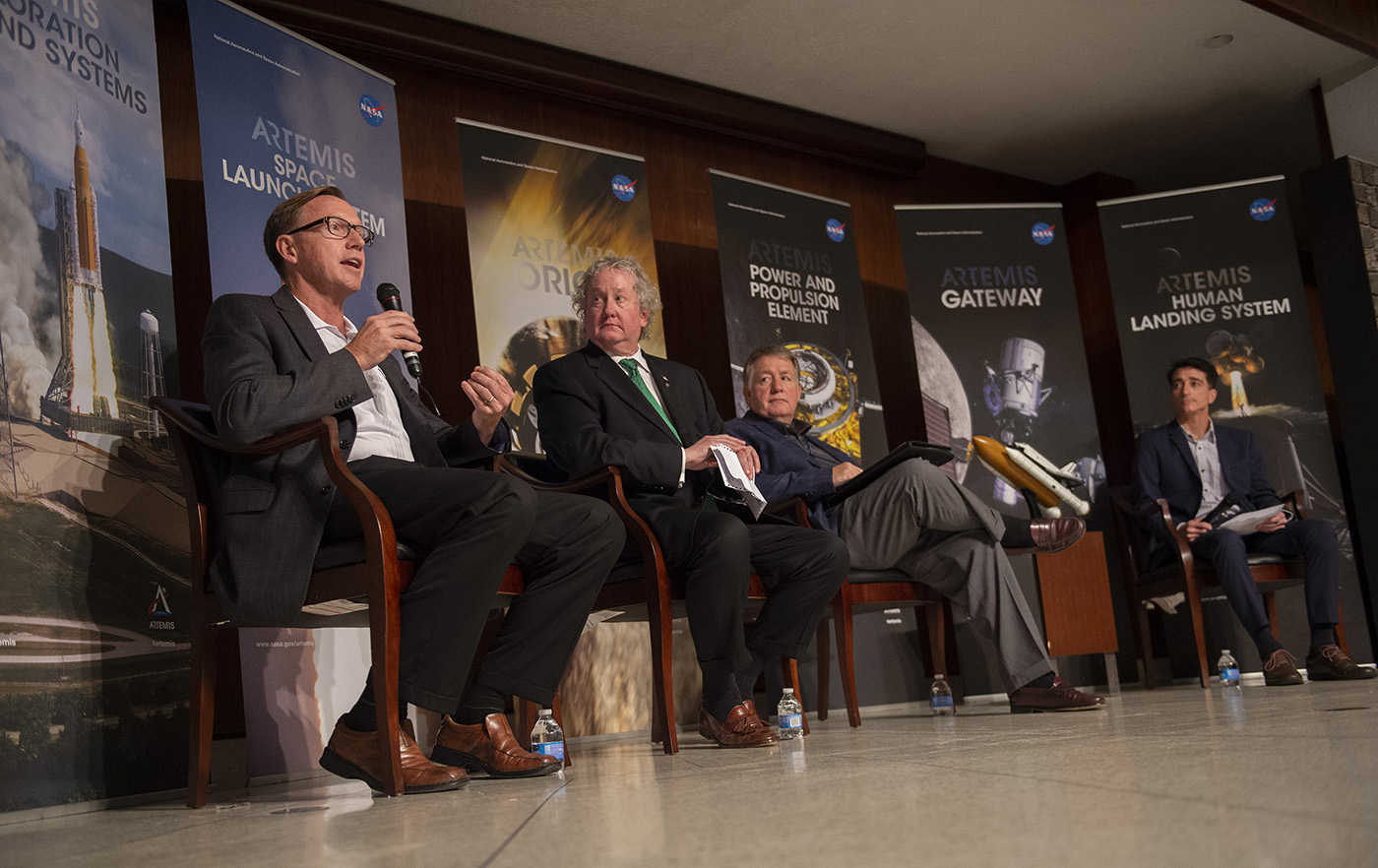
The Space Shuttle Columbia National Tour opened at NASA’s Marshall Space Flight Center on Nov. 4, followed by a town hall and panel discussion Nov. 5. The tour — which closed Nov. 8 — included a display of artifacts from Columbia and discussions with employees on lessons learned.
The goal of the exhibit and week of activities was to educate NASA’s workforce about the accident and share the lessons learned to ensure NASA’s current and future missions are as successful as they possibly can be.
“The path to the Moon and Mars goes through Marshall, making it crucial that the team understands and is prepared to handle complex decisions where mission success and lives are on the line,” said Preston Jones, associate director, technical, at Marshall. “The week’s discussions are an opportunity to increase their understanding of NASA’s technical authority and how risk leadership is executed on our missions. These types of conversations are crucial for Marshall veterans and early career engineers and leaders toward understanding what happened on Columbia and how those lessons can prevent another accident from occurring.”
NASA astronaut Barry “Butch” Wilmore gave the keynote address, following remarks from Ed Rogers, chief knowledge officer at NASA’s Goddard Space Flight Center, and Denise Smithers, deputy director of the Office of Diversity and Equal Opportunity at Marshall. A panel discussion followed, including Jones, Marshall Associate Director Steve Miley and Marshall Advanced Technology Director Bill Hill. It was moderated by Mike Ciannilli, manager for Apollo Challenger Columbia Lessons Learned Program at NASA’s Kennedy Space Center.
NASA astronaut Shane Kimbrough delivered the closing remarks.
Lunch and learns Nov. 6 and 7 gave Marshall team members more opportunities to learn and engage in conversation about the accident, how decisions were made and how to improve decision making in the future.
Marshall’s Safety and Mission Assurance Directorate hosted “Risk Leadership and Lessons Learned from Columbia.” Panelists included Safety and Mission Assurance Director Rick Burt, Safety and Mission Assurance Deputy Director Pete Allen and Bastion Technologies Program Manager Jan Davis.
Marshall Chief Knowledge Integrator Jennifer Stevens hosted “After Math: Foamology and Flight Rationale,” a case study about Columbia. Panelists included several members of the Return to Flight team from Marshall and other centers.
Marshall was the second NASA center to host the program, which began at Kennedy in April. The tour will include stops at all 10 NASA centers.
“Columbia’s helping us towards the future,” Ciannilli said. “This was a very dark time in our history. This was a very difficult time in our history. We’re being extremely vigilant to never forget this incident, and now we’re impassioned to make sure we share this incident and the lessons learned resulting from it with a whole new generation of folks.”
Learn more about The Space Shuttle Columba National Tour by listening to episode 7 of the APPEL Knowledge Services “Small Steps, Giant Leaps” podcast here and on these platforms:
- Apple Podcasts: Small Steps, Giant Leaps on Apple Podcasts
- SoundCloud: Small Steps, Giant Leaps on SoundCloud
- Google Play: Small Steps, Giant Leaps on Google Play
Bryan, an ASRC Federal/Analytical Services employee, supports the Office of Strategic Analysis & Communications.
All Engines Attached to SLS Core Stage for Artemis I
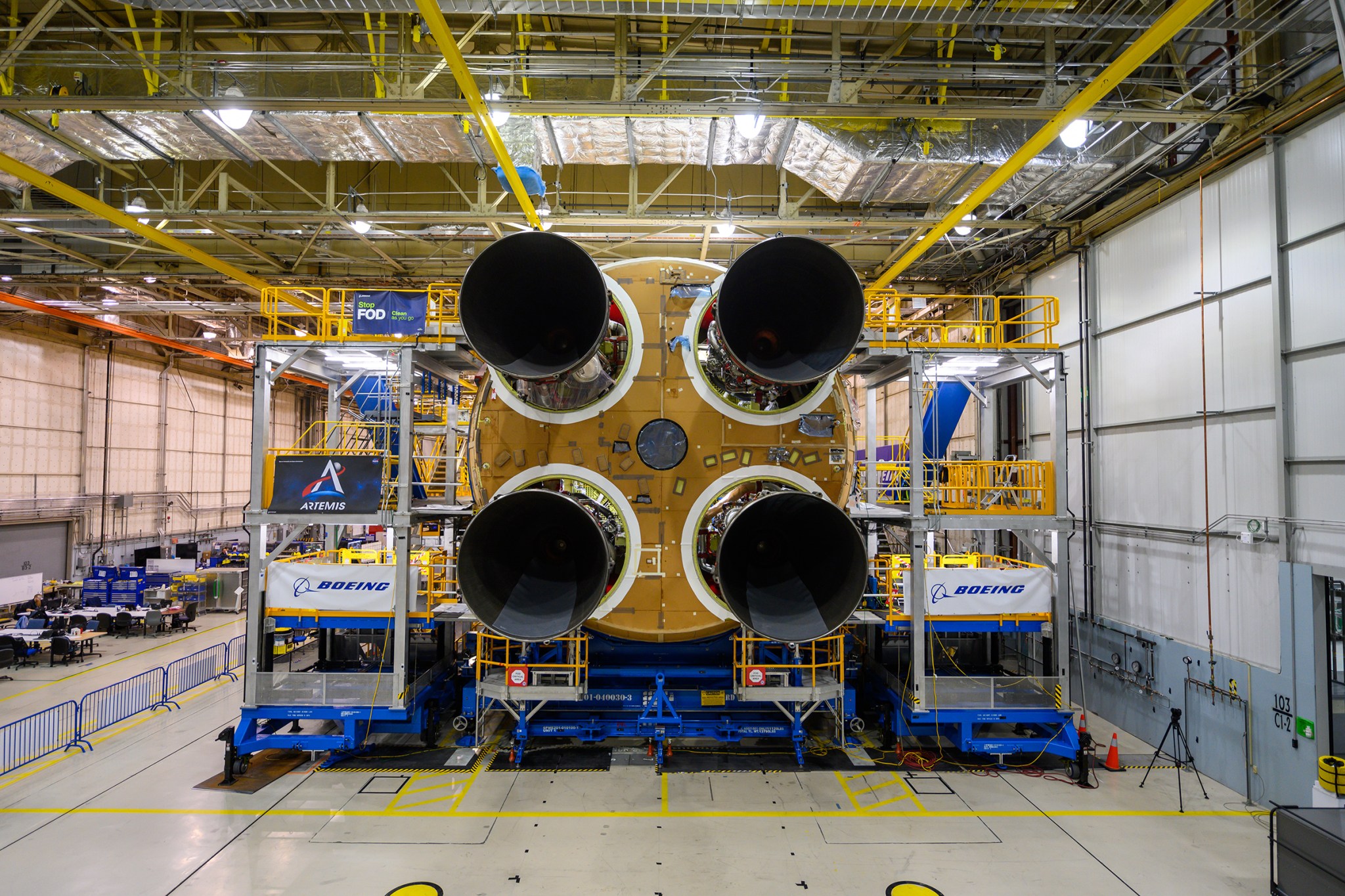
All four RS-25 engines are structurally mated to the core stage for NASA’s Space Launch System rocket for Artemis I, the first mission of SLS and NASA’s Orion spacecraft. The fourth engine was attached to the stage Nov. 6, just one day after crews structurally mated the third engine. Engineers and technicians at NASA’s Michoud Assembly Facility are now integrating the propulsion and electrical systems within the structures to complete assembly of the 212-foot-tall rocket stage. After assembly is complete, crews will conduct an integrated functional test of the flight computers, avionics and electrical systems that run throughout the core stage in preparation for its completion later this year. The testing is the first time all the flight avionics systems will be tested together to ensure the systems communicate with each other and will perform properly to control the rocket’s flight. (NASA/Eric Bordelon)
NASA, University of Alabama to Collaborate on Advanced, In-space Manufacturing
NASA’s Marshall Space Flight Center is expanding its partnership with the University of Alabama in Tuscaloosa to collaborate on advanced and in-space manufacturing.
Marshall Director Jody Singer and University of Alabama President Stuart Bell signed a memorandum of understanding on Nov. 6 in the university’s Rose Administration Building shortly before the Space Days at UA official kickoff.
“NASA is actively partnering with universities and industry from across the country to leverage and accelerate technology development in key areas, especially areas that will make it possible to sustainably live and work on the lunar surface, achieving the Artemis vision,” Singer said.
Artemis is NASA’s path to the Moon and the next step in human exploration of our solar system. Through Artemis, NASA will land the first woman and next man on the Moon by 2024, assisted by innovative partners, technologies and systems. NASA is investing in innovative in-space manufacturing technologies — such as additive manufacturing, in-situ resource utilization, advanced welding — that will aid in developing the technological solutions needed to enable human missions to the Moon, Mars and other deep space destinations.
“Additive manufacturing is a rapidly evolving, disruptive technology,” Singer said. “As NASA continues to invest in in-space additive technology innovations, we welcome collaborations with industry and academia to develop these technologies. I applaud the University of Alabama for pursuing the development of advanced technologies that will help NASA achieve our mission.”
Marshall has worked with the University of Alabama through multiple Space Act Agreements since 2015. Now, the university will enhance its core curriculum in areas of advanced and in-space manufacturing and foster new collaborations to further this emerging technology. Through Space Act Agreements and other partnership mechanisms, NASA shares resources, personnel and expertise, facilities and equipment, and technology to advance aerospace research or achieve mission goals.
Marshall has entered Space Act Agreements with numerous colleges, including in-state institutions Auburn University, Alabama A&M University in Huntsville and the University of North Alabama in Florence. Marshall also partnered with Louisiana State University in Baton Rouge, the University of New Orleans and the state of Louisiana to form the National Center for Advanced Manufacturing at NASA’s Michoud Assembly Facility.
Marshall is the lead center for NASA’s In-space Manufacturing Project, which develops additive manufacturing, or 3D printing, technologies to enable print on-demand replacement parts for equipment and machines operating on the International Space Station. NASA’s continued investments and innovations in in-space additive manufacturing technologies will enable the autonomy and sustainability required to live and work in space, as NASA looks to establish a permanent presence at the Gateway, lunar surface and destinations farther out into the solar system.
Marshall continues to forge new partnerships with universities to further the nation’s advanced manufacturing capabilities and cultivate innovative science, technology, engineering and mathematics workforce development. Marshall is committed to collaborations that strengthen the nation’s STEM education and workforce pipeline by engaging students and teachers in NASA’s missions.
Rocket Science in 60 Seconds: What Is the NASA SLS Rocket’s Exploration Upper Stage?
Rocket Science in 60 Seconds gives you an inside look at work being done at NASA to explore deep space. Kent Chojnacki is the associate manager for the Stages Office for NASA’s Space Launch System rocket at NASA’s Marshall Space Flight Center. In this episode, Chojnacki explains how the exploration upper stage will make the SLS rocket even more powerful and allow more cargo to be sent to the Moon on Artemis lunar missions and later on missions to Mars. For more information about SLS, click here.
Astronaut Anne McClain Shares ISS Stories at Marshall, Honors Service Veterans
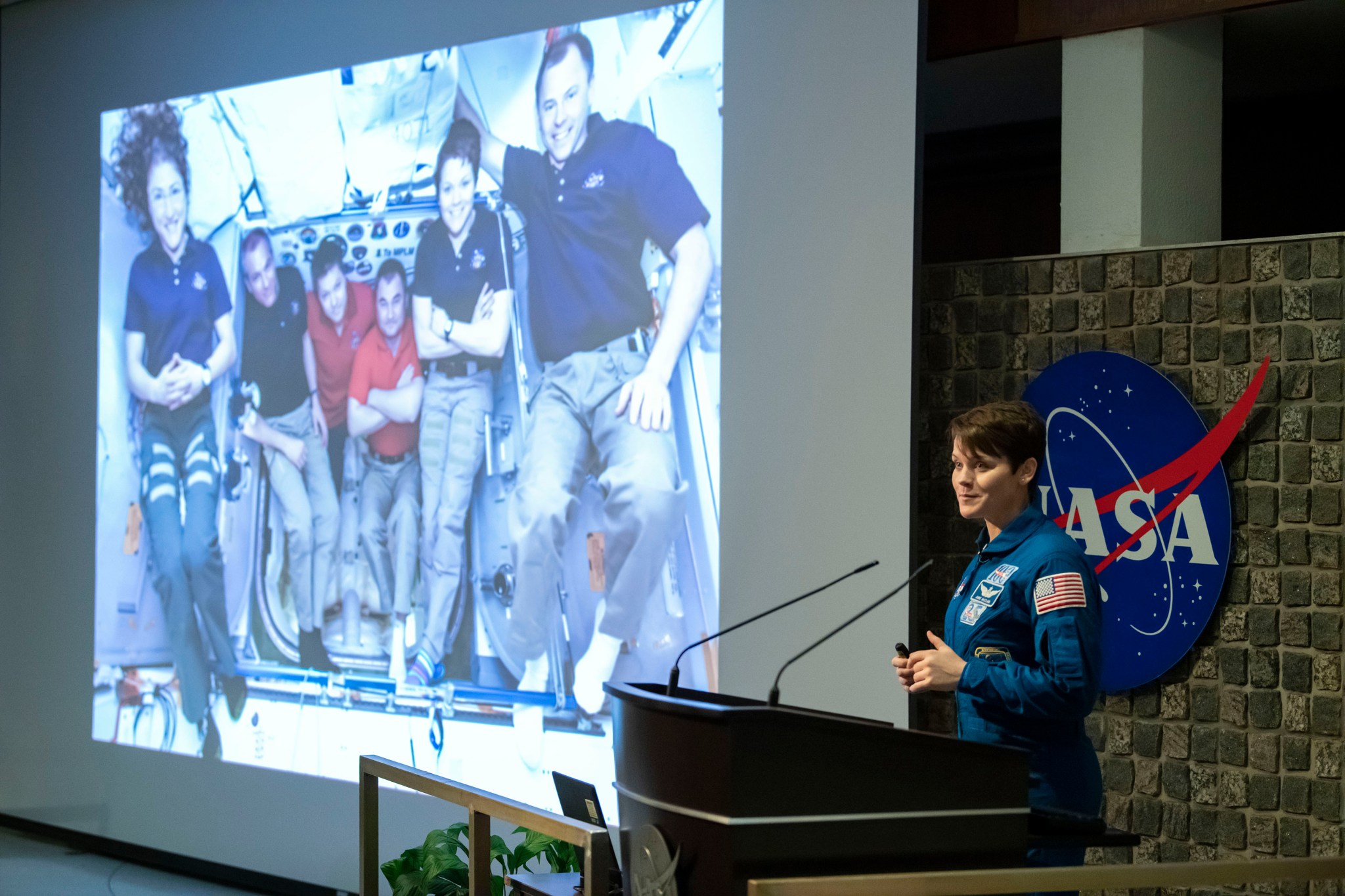
NASA astronaut Anne McClain shares about her experiences on the International Space Station as part of the Expedition 58-59 crew during a visit to NASA’s Marshall Space Flight Center on Nov. 8. McClain, a lieutenant colonel in the U.S. Army, was a station flight engineer from Dec. 3, 2018, to June 24, 2019. (NASA/Fred Deaton)
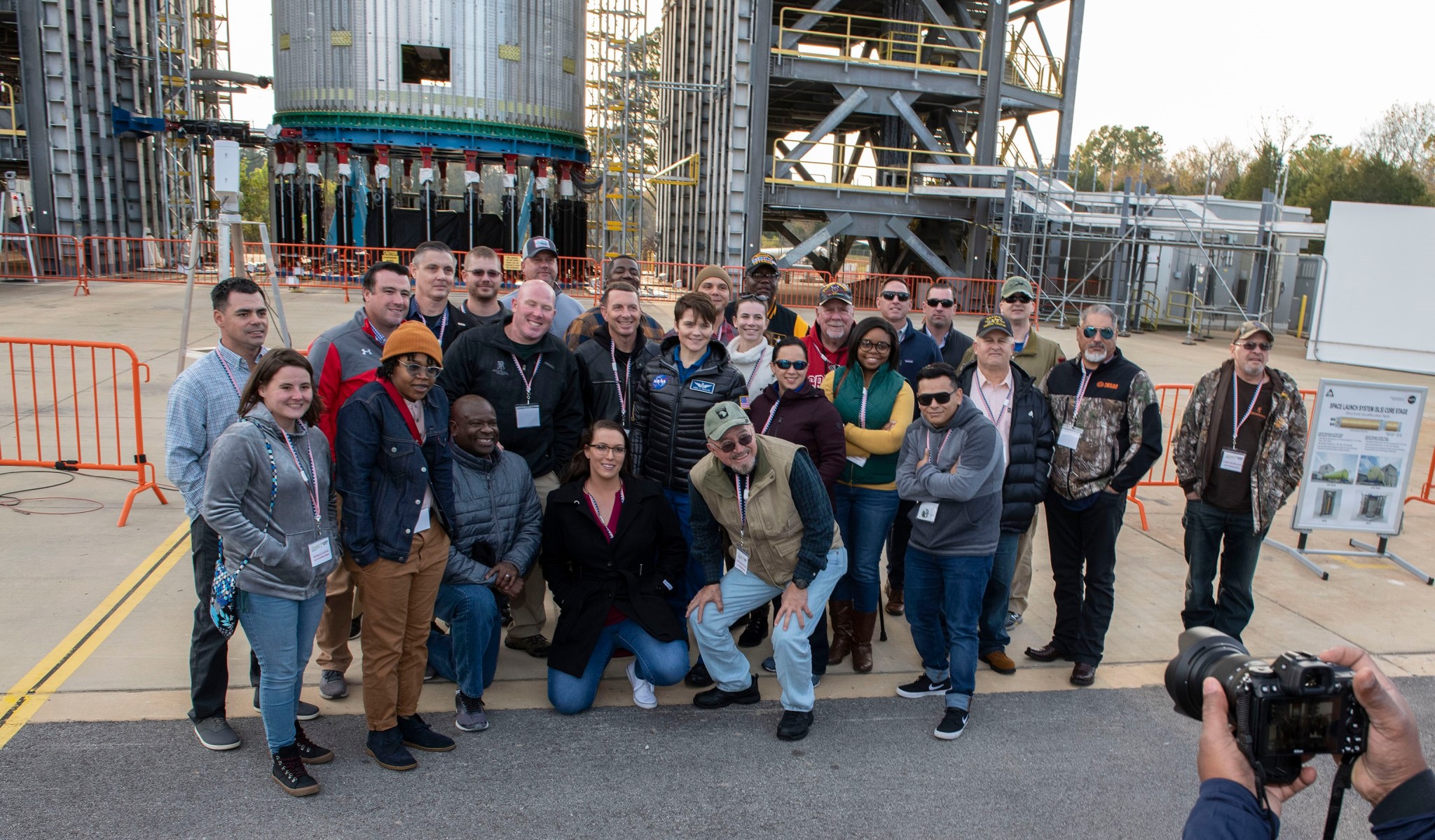
Astronaut Anne McClain, center, and a group of visiting American service veterans tour Marshall Test Stand 4693 on Nov. 8. The group observed preparations for testing of the Space Launch System core stage’s 537,000-gallon liquid hydrogen tank to ensure its structural integrity during simulated launch and flight. The annual visit to Marshall by military veterans from around the nation — part of Marshall’s annual Veterans Day tribute — was sponsored by the nonprofit Wounded Warriors Project, which empowers injured service men and women and seeks to raise awareness and support for their needs. (NASA/Fred Deaton)
NASA Unveils Logo Celebrating 20 Years of Space Station Crewed Research
When NASA astronaut William “Shep” Shepherd assumed command of the International Space Station in fall 2000, the orbiting platform comprised just three small modules. Today, as NASA begins celebrating 20 years of continuously crewed station operations, the station is the shining jewel in Earth orbit — and the springboard to the new Artemis era of discovery and exploration.
Since the Oct. 31, 2000, arrival of the Expedition 1 crew — Shepherd and Russian cosmonauts Yuri Gidzenko and Sergei Krikalev — hundreds of international residents have conducted research aboard the orbiting laboratory to benefit all humankind. The station remains a vital platform for studying the impact of long-duration stays in space on human physiology, better enabling NASA to protect the health of Artemis program crews set to land the first woman and next man on the Moon by 2024, prior to the first crewed missions to Mars.
The 19th anniversary of the start of Expedition 1 kicks off a year of celebration. To commemorate the anniversary, NASA has unveiled a new space station logo. Throughout the year, the space agency will spotlight key crew achievements, hardware firsts and investigative breakthroughs made on station between 2000 and the present. Read more about the anniversary here.
Marshall played an integral role in building and testing space station modules, hardware and science facilities — from the Microgravity Glovebox, Life Sciences Glovebox and critical hardware racks, to the Environmental Control and Life Support System that recycles air and water in orbit, reducing the need for expensive resupply flights from Earth — and continues to manage station hardware and science operations.
Marshall team members in the Payload Operations Integration Center work around-the-clock to coordinate American, European, Japanese and Canadian experiments on orbit, synchronize international partners’ payload activities and direct communications between station crews and global researchers. Marshall continues to develop station flight hardware and life support systems critical to future space exploration.
Space station construction was a collaborative effort by 15 nations led by NASA, Russia’s Roscosmos, the European Space Agency, the Japan Aerospace Exploration Agency and the Canadian Space Agency. It took 11 years and 42 assembly flights to fully build the station, which now measures 357 feet from end to end and has a mass of nearly 1 million pounds. More than 2,700 investigations have been conducted there by science partners from 108 different countries.
Marshall Team, Buckhorn Middle Students Honor Native American Heritage Month
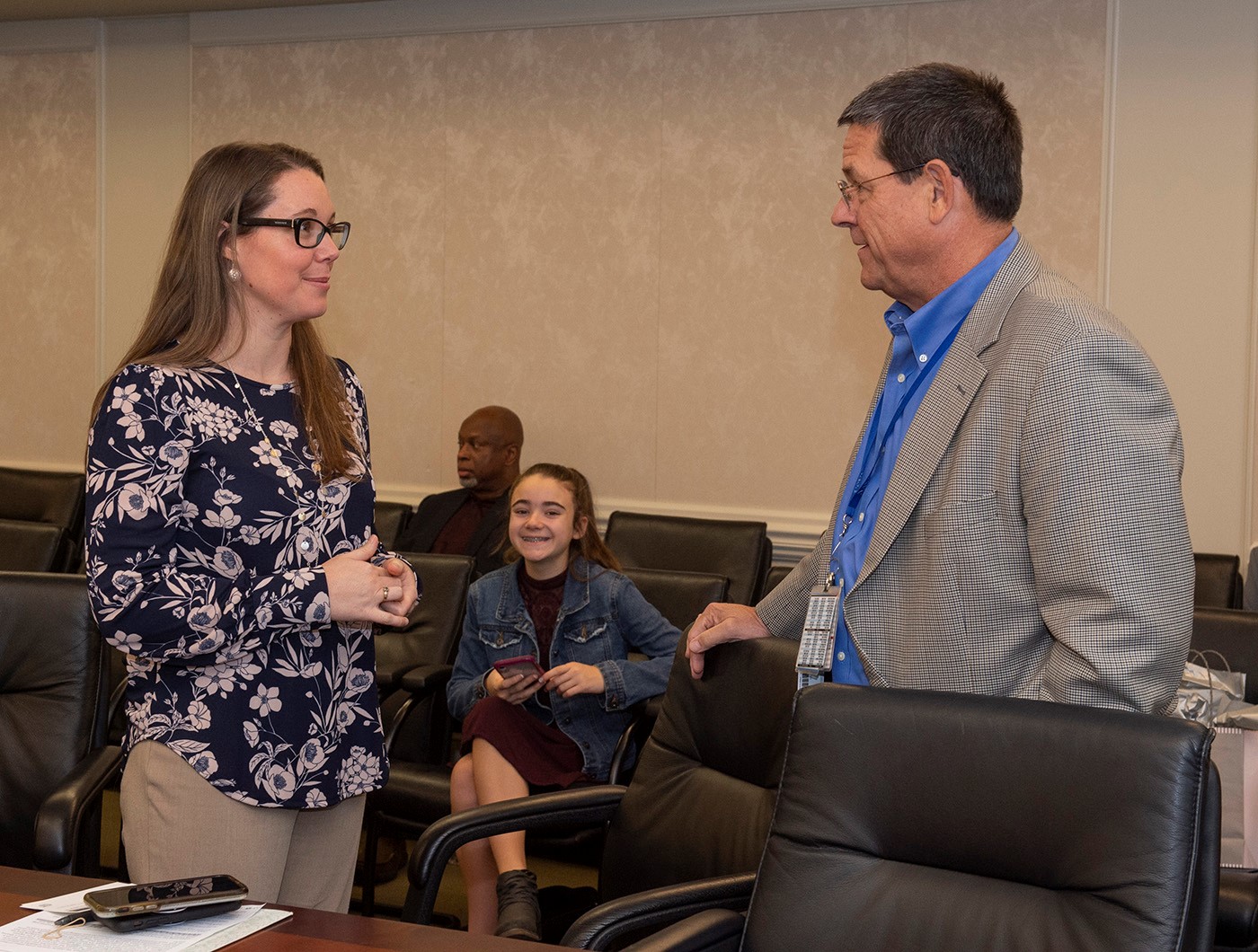
Tara Astigarraga, left, a member of the Choctaw Nation of Arizona, chats with Roy Malone, director of the Office of Center Operations at NASA’s Marshall Space Flight Center, after her Native American Heritage Month presentation at Marshall on Nov. 6 — as her daughter Lexi, seated, looks on. Astigarraga, who holds more than 70 patents, has been designated by IBM as a master inventor. In 2016, she received the American Indian Science and Engineering Society’s Professional of the Year award. (NASA/Emmett Given)
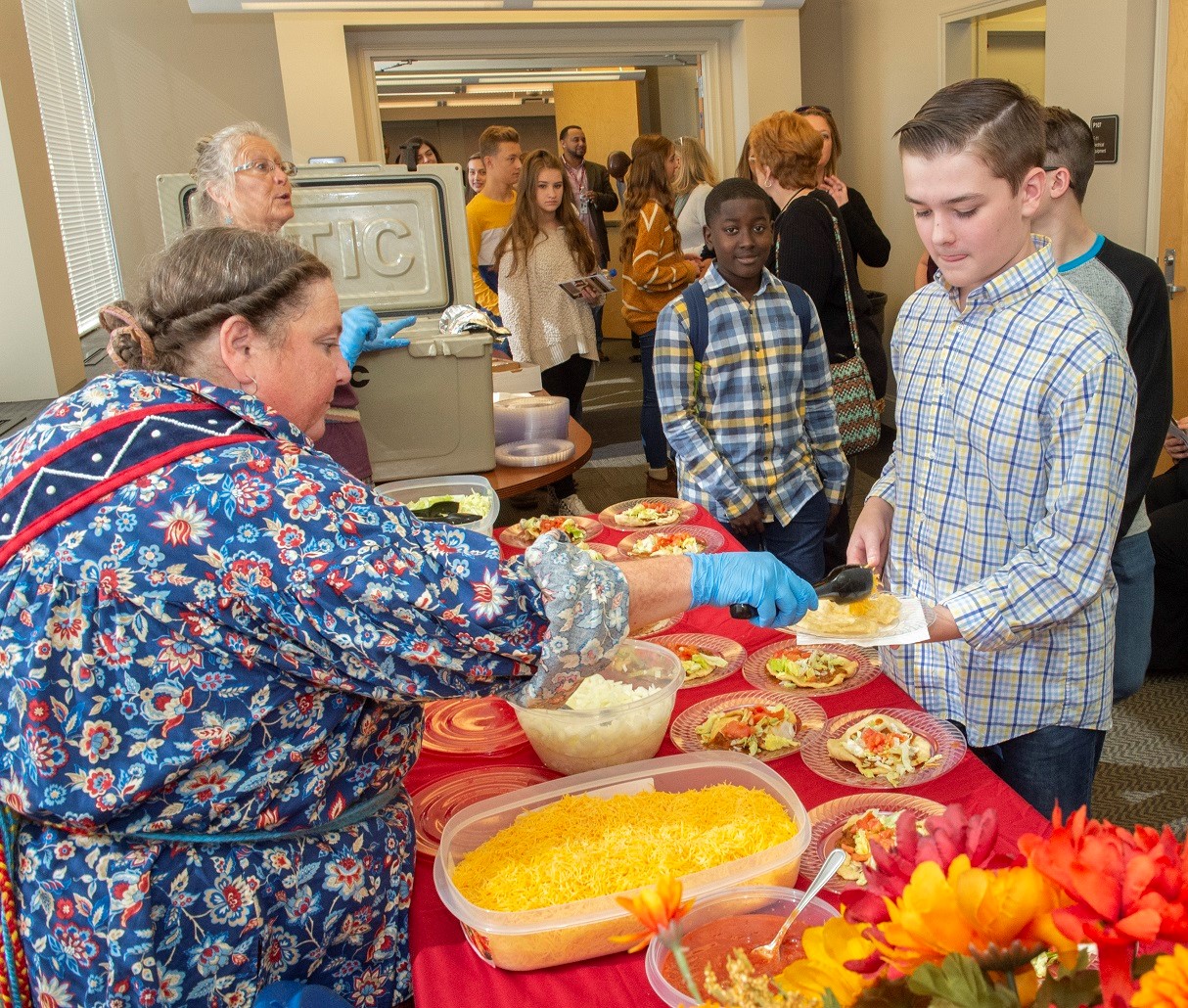
Tonya Dockery, in foreground at left, and Tamara Hicks, rear left, members of the Eastern Band of Cherokee Indians from Tellico Plains, Tennessee, share authentic Native American cuisine with students from Buckhorn Middle School in New Market, Alabama, following the Native American Heritage Month program at Marshall. The students in grades 6-8, all of whom have Native American heritage, study their indigenous history and culture as part of the national Indian Education program, and joined Marshall team members for the heritage celebration. (NASA/Emmett Given)
This Week in NASA History: Apollo 12 Launches – Nov. 14, 1969
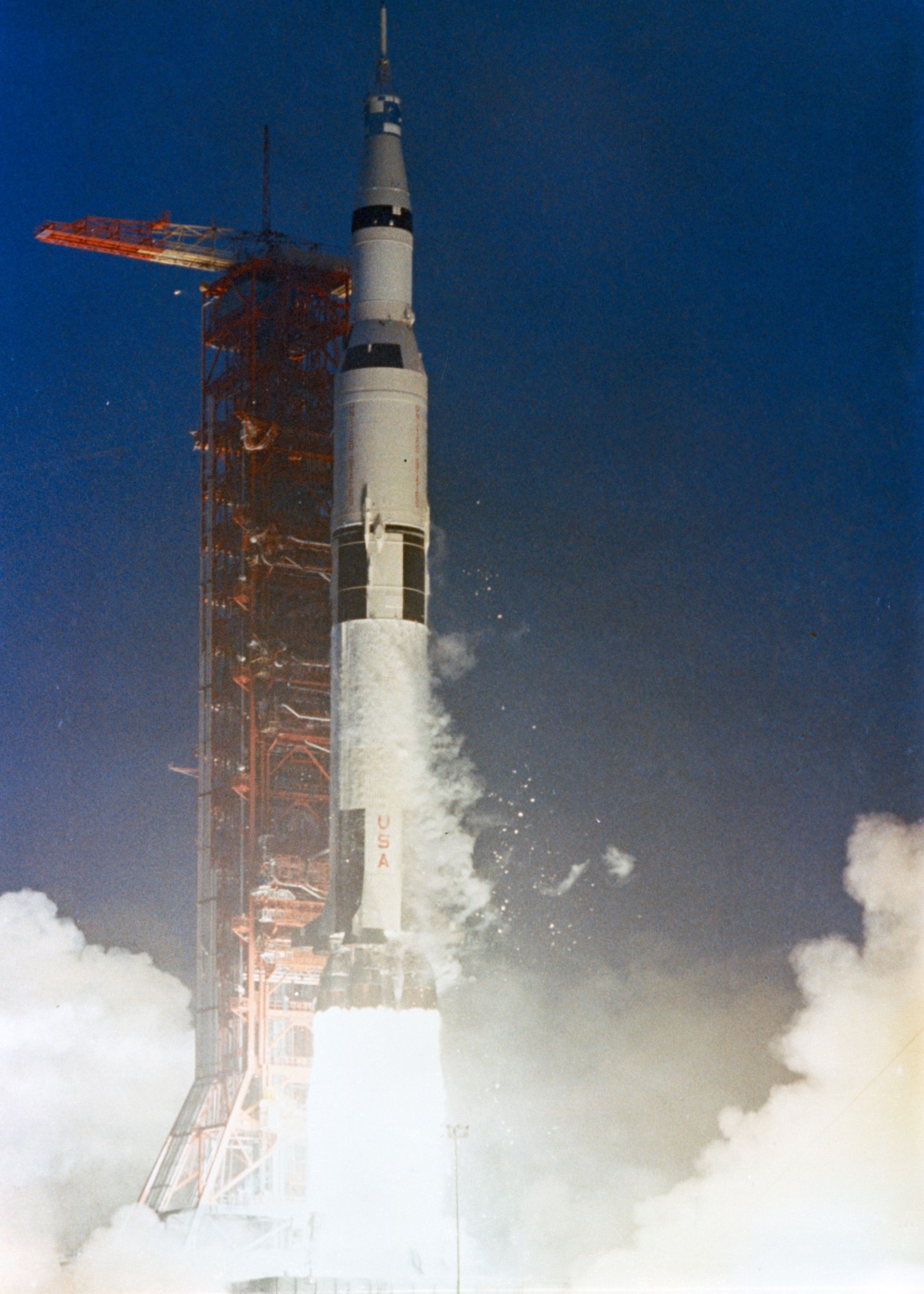
This week in 1969, the Apollo 12 mission launched from NASA’s Kennedy Space Center, carrying astronauts Charles Conrad, Alan Bean and Richard Gordon. The primary mission objectives included an extensive series of lunar exploration tasks by the lunar module as well as deployment of the Apollo Lunar Surface Experiments Package, which was left on the Moon’s surface to gather seismic, scientific and engineering data over an extended period of time. Apollo 12 was the second crewed lunar landing of the Apollo Program. The mission concluded when the Apollo 12 crew successfully splashed down in the Pacific Ocean on Nov. 24, 1969. Now through December 2022, NASA is marking the 50th anniversary of the Apollo Program that landed a dozen astronauts on the Moon between July 1969 and December 1972. The NASA History Program is responsible for generating, disseminating and preserving NASA’s remarkable history and providing a comprehensive understanding of the institutional, cultural, social, political, economic, technological and scientific aspects of NASA’s activities in aeronautics and space. For more pictures like this one and to connect to NASA’s history, visit the Marshall History Program’s webpage. (NASA)







